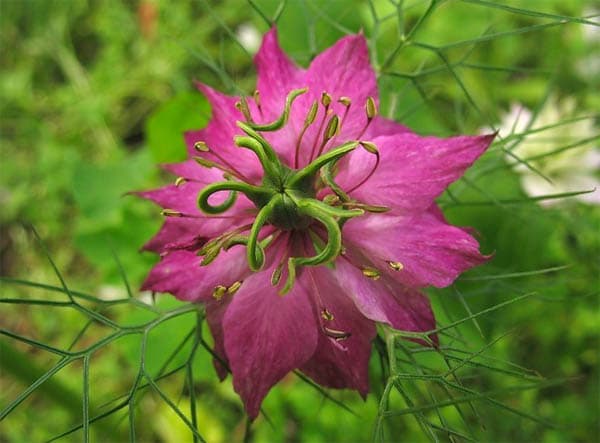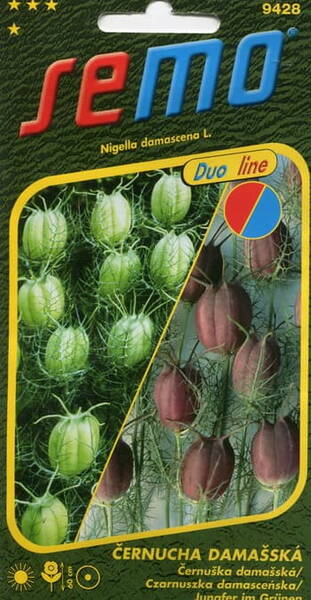Your shopping cart is empty!
Nigella "Duo mix" (bordo+green)
Nigella "Duo mix" ("Cramers Plum Bordeaux" + "Albion Green Pod") - Nigella damascena L.
Homeland: Crimea, Caucasus, Mediterranean.
The plant is an annual herbaceous plant. Stems erect, branching, 55-70 cm tall. Blooms from late June to August. Seeds remain viable for 1-2 years. In culture since 1542.
Location: photophilous, cold-resistant, easily tolerate spring frosts.
Soil: Prefer light, nutritious soils with a high content of lime. Grows poorly on acidic soils. Poorly tolerate excess and lack of moisture.
Reproduction: by seeds, which are sown in May in open ground for a permanent place or in April in greenhouses. Shoots appear on the 18-20th day.
Seedlings dive into peat-humus pots. Young plants bloom two months after sowing. Seeds can be sown before winter.
Seedlings are planted at a distance of 15-20 cm from each other. Plants do not tolerate root damage.
Use: Moorish lawns, group plantings, borders, cutting. Unfortunately, the nigella does not bloom for long-only about four weeks.
However, after the flowers, no less decorative swollen fruits appear on the shoots. As soon as they are fully ripe, they are cut along with the stems and dried, hanging in the shade with their heads down.
In winter, they make magnificent compositions reminiscent of the past summer.
If you want to have a flowering carpet of nigella for a longer time, you will have to sow it in several stages with a month break between them.
Homeland: Crimea, Caucasus, Mediterranean.
The plant is an annual herbaceous plant. Stems erect, branching, 55-70 cm tall. Blooms from late June to August. Seeds remain viable for 1-2 years. In culture since 1542.
Location: photophilous, cold-resistant, easily tolerate spring frosts.
Soil: Prefer light, nutritious soils with a high content of lime. Grows poorly on acidic soils. Poorly tolerate excess and lack of moisture.
Reproduction: by seeds, which are sown in May in open ground for a permanent place or in April in greenhouses. Shoots appear on the 18-20th day.
Seedlings dive into peat-humus pots. Young plants bloom two months after sowing. Seeds can be sown before winter.
Seedlings are planted at a distance of 15-20 cm from each other. Plants do not tolerate root damage.
Use: Moorish lawns, group plantings, borders, cutting. Unfortunately, the nigella does not bloom for long-only about four weeks.
However, after the flowers, no less decorative swollen fruits appear on the shoots. As soon as they are fully ripe, they are cut along with the stems and dried, hanging in the shade with their heads down.
In winter, they make magnificent compositions reminiscent of the past summer.
If you want to have a flowering carpet of nigella for a longer time, you will have to sow it in several stages with a month break between them.
* The fruit is a small box. The seeds are black, trihedral, ripen in late August - early September.
Nigella seeds have a pleasant nutmeg smell, so they flavour confectionery products, sprinkle cookies, pretzels before baking,
Added when sauerkraut, pickled cucumbers, used as a seasoning for meat and fish dishes.

Nigella, devil in the bush, nigella, Jack in the green, love-in-a-mist, ragged lady.















